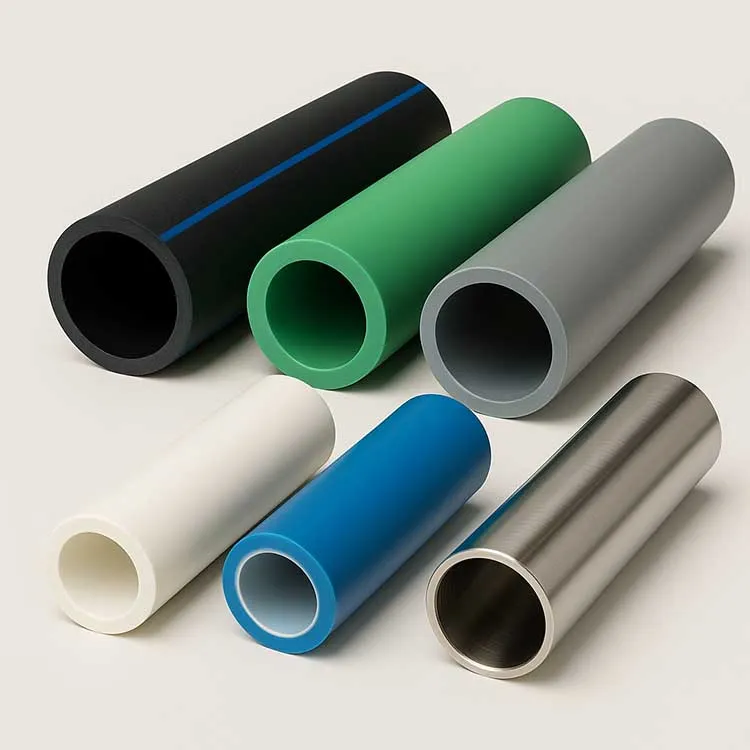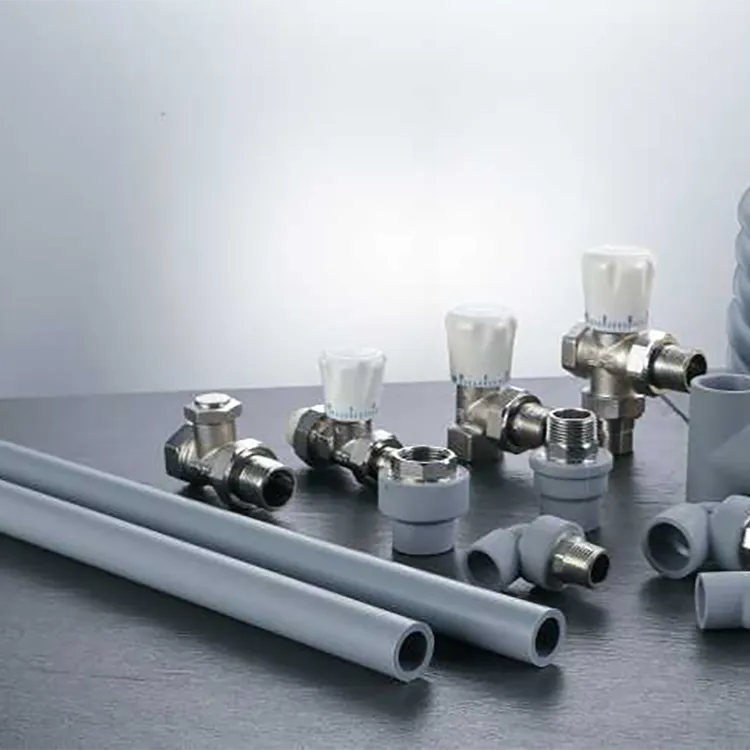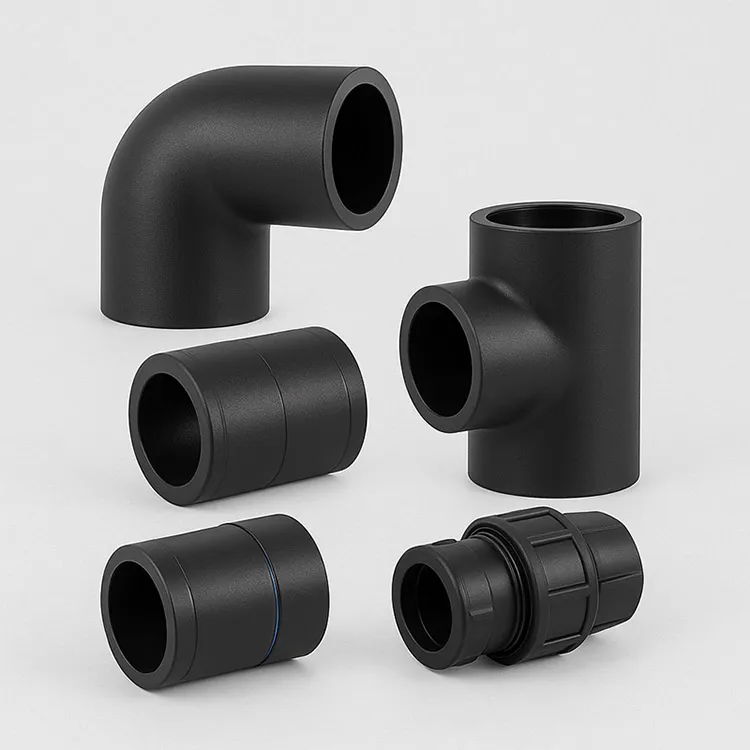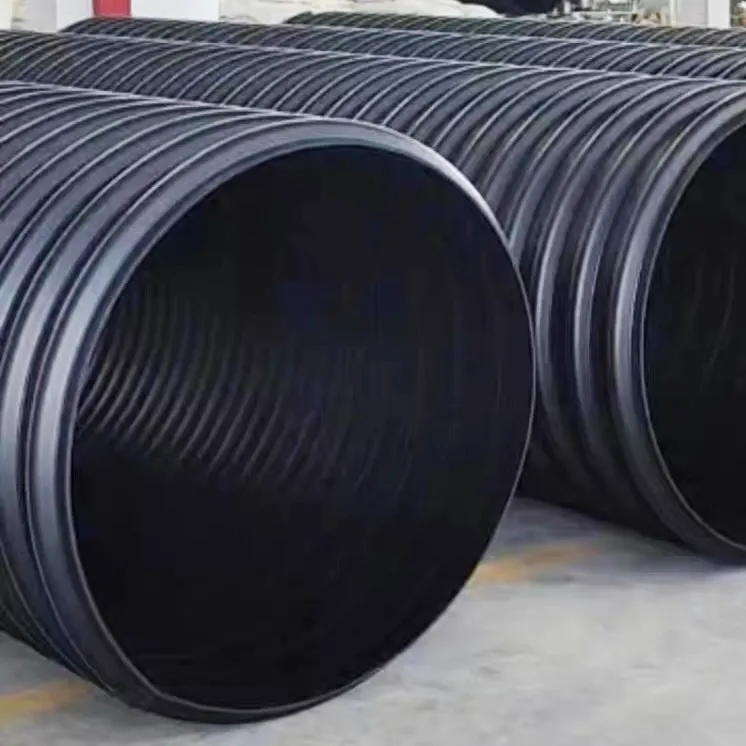PVC Plastic Pipe vs Stainless Steel Pipe: Making the Right Choice for Your Applications
PVC (polyvinyl chloride) plastic pipes and stainless steel pipes are materials commonly used for different applications due to their distinct characteristics. Here are some points of comparison between PVC plastic pipes and stainless steel pipes
1. Material Composition
- PVC Pipe: PVC pipes are made of a type of plastic called polyvinyl chloride. They are lightweight and are often used for water supply, drainage, and irrigation systems.
- Stainless Steel Pipe: Stainless steel pipes are made of an alloy of iron, chromium, nickel, and other elements. Stainless steel is known for its corrosion resistance, durability, and strength.
PVC pipes are crafted from polyvinyl chloride, a type of plastic renowned for its lightweight nature and resistance to corrosion and chemicals. PVC pipes are commonly used in water supply systems, irrigation, and drainage applications. On the other hand, stainless steel pipes are composed of an alloy that typically includes iron, chromium, nickel, and other elements. Known for its exceptional corrosion resistance and strength, stainless steel finds applications in a broad spectrum of industries, including chemical processing, oil and gas, and high-temperature environments.
2. Corrosion Resistance
- PVC Pipe: PVC pipes are resistant to corrosion and chemical degradation. They do not corrode or rust, making them suitable for various applications.
- Stainless Steel Pipe: Stainless steel is highly corrosion-resistant, making it an excellent choice for applications where corrosion is a concern. It is particularly advantageous in environments with exposure to corrosive elements.
Corrosion is a significant concern in many applications. PVC pipes, being plastic, are inherently resistant to corrosion and chemical degradation. This makes them an ideal choice for applications where exposure to corrosive elements is minimal. Stainless steel, however, takes corrosion resistance to the next level. Its alloy composition, particularly the presence of chromium, provides an unparalleled ability to withstand corrosive environments, making stainless steel pipes indispensable in applications where corrosion is a constant threat.
3. Strength and Durability
- PVC Pipe: PVC pipes are lightweight and may not be as strong as stainless steel. They are, however, durable and can withstand a range of temperatures and pressures.
- Stainless Steel Pipe: Stainless steel pipes are known for their strength and durability. They can handle high-pressure applications and are resistant to impact and temperature extremes.
Strength and durability are key considerations in choosing piping material. PVC pipes, while durable and capable of withstanding a range of temperatures and pressures, may not match the sheer strength of stainless steel. Stainless steel pipes boast exceptional strength, making them suitable for high-pressure applications, impact resistance, and environments with extreme temperatures.
4. Cost
- PVC Pipe: PVC pipes are generally more cost-effective than stainless steel pipes. They are often chosen for projects where cost is a significant consideration.
- Stainless Steel Pipe: Stainless steel pipes tend to be more expensive than PVC pipes. The initial cost is higher, but the long-term durability and low maintenance costs can offset this.
Cost is often a significant factor in material selection for projects. PVC pipes are generally more cost-effective than stainless steel pipes. The lower initial cost of PVC can be attractive for projects with tight budget constraints. However, it's essential to weigh this against the long-term benefits of stainless steel, which requires minimal maintenance and has a longer service life.
5. Installation
- PVC Pipe: PVC pipes are lightweight and easy to handle, making them relatively easy to install. They can be connected using various methods, including solvent cementing, threading, and compression fittings.
- Stainless Steel Pipe: Stainless steel pipes can be heavier and may require specialized tools for cutting and installation. Welding or threading is often used for connecting stainless steel pipes.
Installation Ease
Installation considerations can impact project timelines and costs. PVC pipes are lightweight and easy to handle, simplifying the installation process. They can be connected using methods such as solvent cementing, threading, and compression fittings. On the other hand, stainless steel pipes, with their heavier weight, may require specialized tools for cutting and installation. Welding or threading is often used for connecting stainless steel pipes, requiring skilled labor.
6. Applications
- PVC Pipe: PVC pipes are commonly used in water supply systems, drainage, irrigation, and some industrial applications. They are not suitable for high-temperature applications.
- Stainless Steel Pipe: Stainless steel pipes are used in a wide range of applications, including water and gas supply, chemical processing, oil and gas pipelines, and high-temperature environments.
The choice between PVC and stainless steel ultimately depends on the specific requirements of the application. PVC pipes are commonly employed in water supply systems, irrigation, and residential plumbing due to their cost-effectiveness and ease of installation. Stainless steel pipes find their place in industries with stringent durability and corrosion resistance demands, such as chemical processing, oil and gas, and high-temperature applications.
Considering Environmental Conditions, PVC Plastic Pipe or Stainless steel pipe?
When considering environmental conditions for piping materials, both PVC plastic pipes and stainless steel pipes have distinct advantages and considerations. The choice between them depends on the specific environmental factors associated with your project. Here's a breakdown of how each material fares in different environmental conditions
1. Corrosive Environments
- PVC Pipes PVC pipes are inherently resistant to corrosion. They are an excellent choice for environments where corrosion is a concern, such as areas with high humidity, saltwater exposure, or exposure to certain chemicals.
- Stainless Steel Pipes Stainless steel is known for its exceptional corrosion resistance. It is particularly suitable for harsh environments, including those with high levels of humidity, salt, or corrosive chemicals.
2. High-Temperature Environments
- PVC Pipes PVC pipes have temperature limitations, and they may soften or deform at high temperatures. They are not suitable for applications where the operating temperatures exceed their recommended range.
- Stainless Steel Pipes Stainless steel pipes can withstand high temperatures and are suitable for applications involving hot liquids or gases. They retain their strength and structural integrity at elevated temperatures.
3. Low-Temperature Environments
- PVC Pipes PVC pipes can become brittle at low temperatures. In extremely cold conditions, they may be susceptible to cracking or damage.
- Stainless Steel Pipes Stainless steel pipes maintain their strength and ductility even at low temperatures, making them suitable for applications in cold climates.
4. UV Exposure
- PVC Pipes PVC pipes are vulnerable to ultraviolet (UV) degradation when exposed to direct sunlight for extended periods. In outdoor applications, they may require UV-resistant coatings or protection.
- Stainless Steel Pipes Stainless steel does not degrade due to UV exposure, making it a suitable choice for outdoor applications without the need for additional protective measures.
5. Chemical Exposure
- PVC Pipes PVC is resistant to many chemicals, but it may not be suitable for all types of aggressive chemicals. It's essential to check compatibility with specific chemicals in your project.
- Stainless Steel Pipes Stainless steel has excellent chemical resistance and is resistant to a wide range of corrosive substances, making it suitable for chemical processing industries.
6. Water Quality
- PVC Pipes PVC pipes are commonly used for water supply systems and are safe for transporting potable water. They do not affect the taste or quality of the water.
- Stainless Steel Pipes Stainless steel is also suitable for water supply systems and does not leach contaminants into the water, ensuring good water quality.
In summary, when considering environmental conditions, both PVC plastic pipes and stainless steel pipes have their strengths. PVC is well-suited for corrosion resistance and chemical resistance in specific applications, while stainless steel excels in high-temperature environments and offers superior overall corrosion resistance. Carefully assess the environmental factors relevant to your project to determine which material aligns best with your specific requirements.
How to choose pvc pipes?
Choosing the right PVC (polyvinyl chloride) pipes involves considering various factors to ensure they meet the specific requirements of your project. Here's a guide on how to choose PVC pipes:
1. Application
- Identify the specific application for which you need PVC pipes. Whether it's for water supply, irrigation, drainage, or other purposes, understanding the intended use is crucial.
2. Type of PVC Pipe
- PVC pipes come in different types, including PVC-U (unplasticized PVC), PVC-C (chlorinated PVC), and PVC-O (oriented PVC). Each type has specific characteristics suitable for different applications. For example, PVC-U is commonly used for water supply, while PVC-C is suitable for higher temperature applications.
3. Size and Diameter
- Determine the required size and diameter of the PVC pipes based on the flow rate, pressure, and volume of the system. Consider factors such as the distance the water needs to travel and the number of fixtures or outlets.
4. Pressure Rating
- PVC pipes have different pressure ratings, indicating the maximum pressure they can handle. Choose a PVC pipe with a pressure rating that matches or exceeds the pressure requirements of your system.
5. Temperature Resistance
- Consider the temperature conditions in which the PVC pipes will be used. Different types of PVC pipes have varying temperature resistance. Ensure that the chosen PVC pipes can withstand the temperature range of the intended application.
6. Corrosion Resistance
- PVC pipes are inherently resistant to corrosion, but if your application involves exposure to corrosive substances, ensure that the selected PVC pipes are suitable for such conditions.
7. Standards and Certifications
- Check if the PVC pipes meet industry standards and certifications. Look for markings such as the ASTM (American Society for Testing and Materials) standard to ensure the pipes comply with quality and performance standards.
8. Joining Methods
- Consider the joining methods compatible with the PVC pipes. PVC pipes can be joined using solvent cementing, threading, or using compression fittings. Choose a method that aligns with your project requirements and expertise.
9. Cost Considerations
- Evaluate the cost of PVC pipes in relation to your budget. PVC pipes are generally cost-effective, but prices can vary based on the type, size, and brand. Consider the long-term benefits and durability to assess overall value.
10. Supplier Reputation
- Choose a reputable supplier or manufacturer for your PVC pipes. A reliable supplier ensures the quality and consistency of the pipes, providing you with products that meet industry standards.
11. Local Regulations
- Be aware of local building codes and regulations regarding the use of PVC pipes. Ensure that your chosen PVC pipes comply with these regulations to avoid issues during inspections or installations.
By carefully considering these factors, you can make an informed decision when choosing PVC pipes for your project, ensuring they are well-suited to the specific requirements and conditions of your application.



981.webp)

 (1)379.webp)

294.webp)
476.webp)
420.webp)
146.webp)
460.webp)
287.webp)
274.webp)
688.webp)


